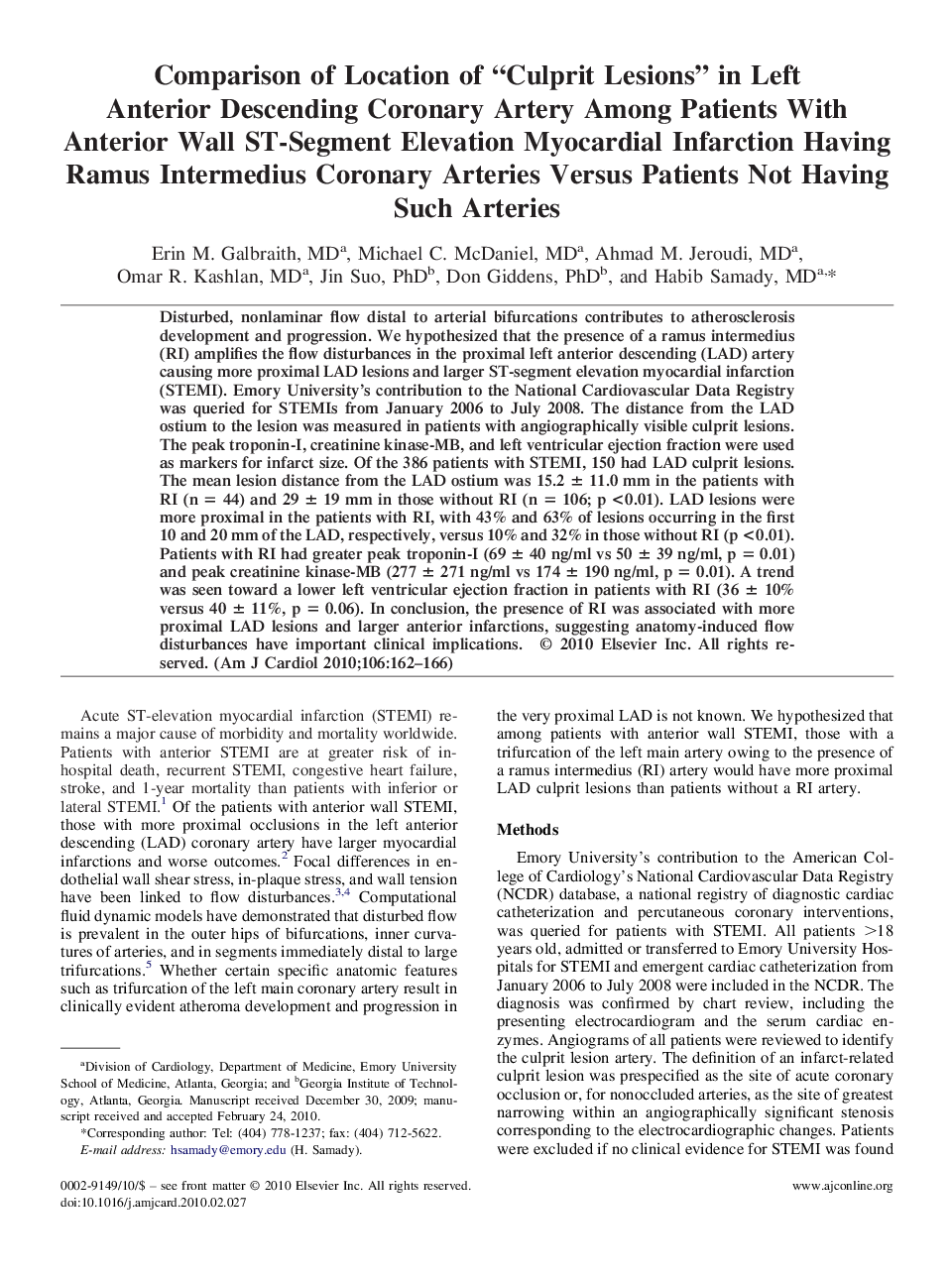| کد مقاله | کد نشریه | سال انتشار | مقاله انگلیسی | نسخه تمام متن |
|---|---|---|---|---|
| 2858180 | 1572268 | 2010 | 5 صفحه PDF | دانلود رایگان |

Disturbed, nonlaminar flow distal to arterial bifurcations contributes to atherosclerosis development and progression. We hypothesized that the presence of a ramus intermedius (RI) amplifies the flow disturbances in the proximal left anterior descending (LAD) artery causing more proximal LAD lesions and larger ST-segment elevation myocardial infarction (STEMI). Emory University's contribution to the National Cardiovascular Data Registry was queried for STEMIs from January 2006 to July 2008. The distance from the LAD ostium to the lesion was measured in patients with angiographically visible culprit lesions. The peak troponin-I, creatinine kinase-MB, and left ventricular ejection fraction were used as markers for infarct size. Of the 386 patients with STEMI, 150 had LAD culprit lesions. The mean lesion distance from the LAD ostium was 15.2 ± 11.0 mm in the patients with RI (n = 44) and 29 ± 19 mm in those without RI (n = 106; p <0.01). LAD lesions were more proximal in the patients with RI, with 43% and 63% of lesions occurring in the first 10 and 20 mm of the LAD, respectively, versus 10% and 32% in those without RI (p <0.01). Patients with RI had greater peak troponin-I (69 ± 40 ng/ml vs 50 ± 39 ng/ml, p = 0.01) and peak creatinine kinase-MB (277 ± 271 ng/ml vs 174 ± 190 ng/ml, p = 0.01). A trend was seen toward a lower left ventricular ejection fraction in patients with RI (36 ± 10% versus 40 ± 11%, p = 0.06). In conclusion, the presence of RI was associated with more proximal LAD lesions and larger anterior infarctions, suggesting anatomy-induced flow disturbances have important clinical implications.
Journal: The American Journal of Cardiology - Volume 106, Issue 2, 15 July 2010, Pages 162–166